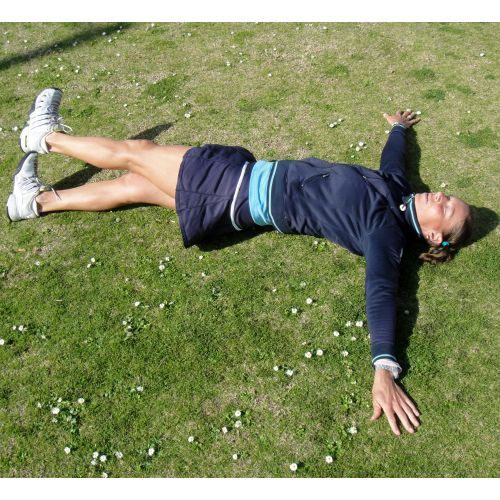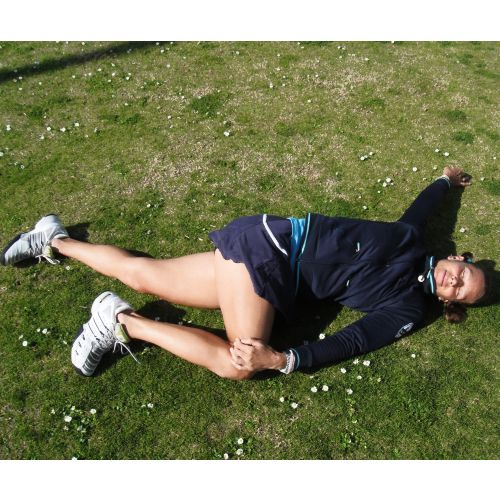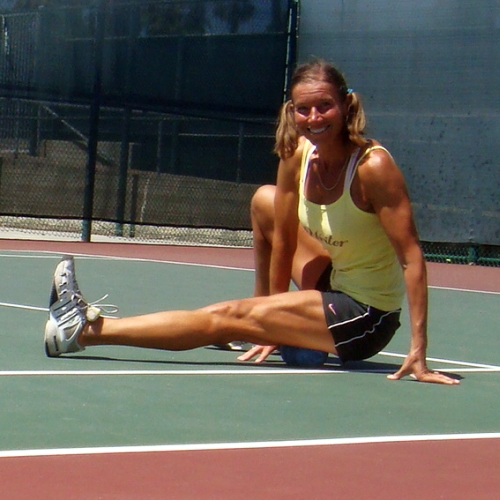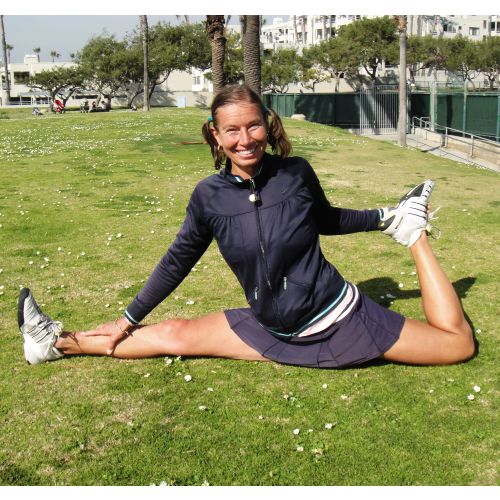Hip and knee pain is one of the most common issues for serious and recreational tennis players.
When I tell people how often I play tennis, their first questions is “How about your knees? Isn’t playing on the concrete really bad for your knees and hips?”
Well… yes and no.
It is not one of the most friendly surfaces for running around, stopping, turning on a spot, going left, going right… all in quite random manner. It can be hard on your body, ESPECIALLY if your muscles and tendons are not strong enough to withstand all the forces.
If you have been reading my website for a while, you know now that you definitely need tennis specific fitness regimen to play your best tennis and to remain injury-free.
Strengthening and re-balancing the hips should be one of the most important goals for you. The hips are the powerhouse of all your movement on the court, but also in walking and standing.
Dysfunctional hips = many future problems, aches and injuries.
If your hips don’t function correctly, other muscle groups have to compensate and take some of the load that the hips should be taking. The other muscles and joints are more delicate than the glutes and hips. Pain in your knees and ankles slowly starts creeping in. Even issues with the shoulders often start in the hips.
Hip and Knee Pain
Hip and knee pain is a major source of distress for a serious tennis player. If you have aches in your hips or knees, you cannot move freely because every step will remind you of your discomfort.
Common pain explanations are: arthritis, ligament injury or deterioration of joint cartilage. But very often the problem is not that serious. The pain can be nothing more than referred pain from the trigger points in the muscles of the thigh. The pain can be so intense that it is very similar to a pain of a damaged joint.
If you experience a hip and knee pain, your first step should be to look for trigger points and try to treat them with self-myofascial release.
We already know that knee pain is often caused by a tight IT band. Myofascial release of the IT band often releases the knee pain. But sometimes it is not enough. If there’s tenderness in the IT band, releasing the trigger points is a good start.
If the IT band is very tight as well, it is due to tightness in the tensor fasciae latae (TFL) muscle and gluteus maximus.
TFL aka Tensor Fasciae Latae… What a cool name
TFL is a muscle on the top of your thigh and its thick tendon is the illiotibial band. They assist in bending the knee and the hip, raise the thigh up, rotate the leg inward and stabilize the hips during walking and running.
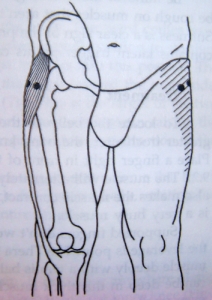
Tennis is such an intense activity and the directional changes together with sprinting and stopping can easily overwork the TFL. Subsequent sitting keeps the muscle shortened and supports developing the pesky trigger points. Even at night, sleeping with your knees up does make this problem worse.
Pain from trigger points in TFL can be felt in the hip or even down the leg or in the back of the hip. If you don’t have pain in your hip yet, but you find your hip stiff, overworking the muscles can easily activate the trigger points. So you should perform the myofascial release as well.
Myofascial Release of TFL Muscle
Lie down on the side on the foam ball. Or even better on a lacrosse ball, because in athletes, the TFL muscles are often very well developed and very thick and it can be difficult to reach the trigger points with the foam ball. You can use a baseball or softball ball as well. With the ball under the hip, start rolling across the hip.
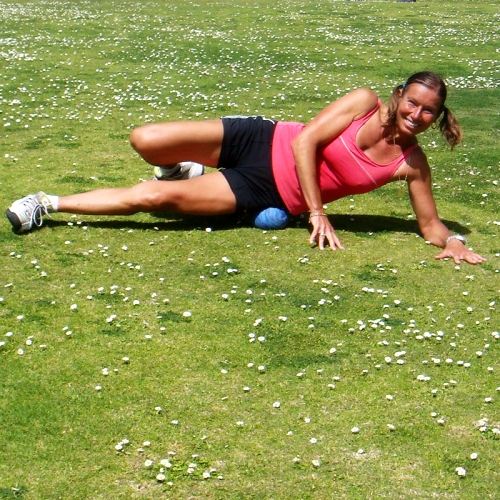
This can be extremely painful. Each time you find a painful spot, stop moving, lay on it and try to relax by breathing deeply. Eventually the pain goes away. Then you can move on another spot.
If you release your TFL regularly, you will feel less pain down your leg and in your hips and knees. You will also experience better mobility in your hips and more rotational range of motion. This will make turning your body while loading the hips much less effortless.
Your shots will get more powerful, but most of all, you will be pain-free and will be able to train harder and more often.
Develop a habit of constantly searching for trigger points in your muscles and address them before they will cause you some more serious issues.
Did you enjoy this article? Learn more about tennis specific training and injury prevention in this simple manual that fits perfectly your tennis bag to carry with you everywhere.
.

